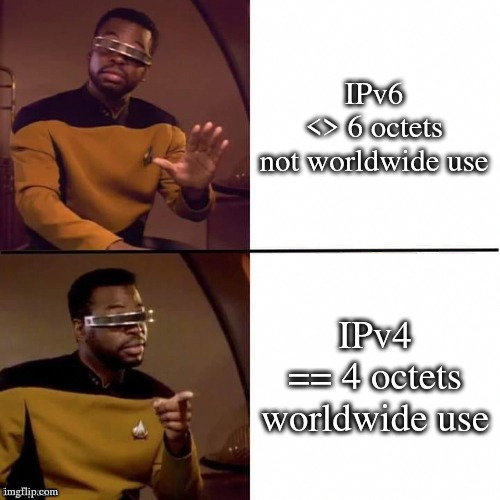this post was submitted on 19 Jun 2024
315 points (85.7% liked)
Programmer Humor
19149 readers
1197 users here now
Welcome to Programmer Humor!
This is a place where you can post jokes, memes, humor, etc. related to programming!
For sharing awful code theres also Programming Horror.
Rules
- Keep content in english
- No advertisements
- Posts must be related to programming or programmer topics
founded 1 year ago
MODERATORS
you are viewing a single comment's thread
view the rest of the comments
view the rest of the comments

This is practically never the case with IPv6. Usually, each device gets its own public IP. This is how the IPv4 internet used to work in the old days (one IP = one device), and it solves so many problems. No need for NAT traversal since there's no NAT. No need for split horizon DNS since the same IP works both inside and outside your network.
There's still a firewall on the router, of course.
With IPv6, each network device can have multiple IPs. If you have an internal IP for whatever reason, it's in addition to your public IP, not instead of it.
IPs are often allocated using SLAAC (stateless address auto config). The router tells the client "I have a network you can use; its IP range is
2001:whatever/64, and the client auto-generates an IP in that range, either based on the MAC address (always the same) or random, depending on if privacy extensions are enabled - usually on for client systems and off for servers.Just like ipv4 though, you wouldn’t use external addresses internally because your external IPs might change, such as when moving between ISPs. You would NAT a hosts external address to its internal address.
This is true
This is usually not true.
If you're worried about your external IP changing (like if you're hosting a server on it), you'd solve it the same way you solve it with IPv4: Using dynamic DNS. The main difference is that you run the DDNS client on the computer rather than the router. If there's multiple systems you want to be able to access externally, you'd habe multiple DDNS hostnames.
DNS doesn’t propagate fast enough.